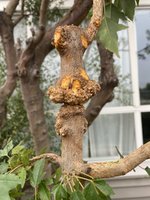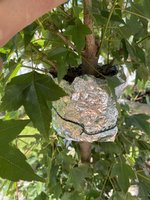Themilkyway
Sapling
Hello,
Today I took off an air layer that didn’t root but has callused tremendously. I cleaned up some branches, left a leader, and applied cut paste. I originally started the airlayer at the beginning of June and gave it 3 months. Should I have just kept it on? Is it too late to rescar and start another layer in September or wait until the spring.
I don’t know what I did wrong. Any feedback would be much appreciated. Thank you
Today I took off an air layer that didn’t root but has callused tremendously. I cleaned up some branches, left a leader, and applied cut paste. I originally started the airlayer at the beginning of June and gave it 3 months. Should I have just kept it on? Is it too late to rescar and start another layer in September or wait until the spring.
I don’t know what I did wrong. Any feedback would be much appreciated. Thank you



